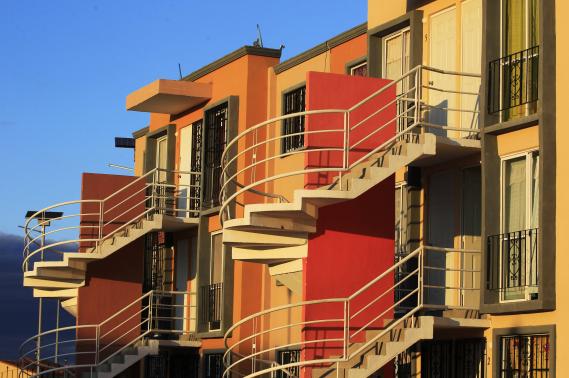(Reuters) – Just outside the town of Zumpango, about an hour from Mexico City, packs of stray dogs sniff around abandoned homes in a half-empty neighborhood.

The Santa Fe housing development, where power outages and flooding are the norm, is a casualty of Mexico’s dysfunctional housing market. Work on the subdivision stalled before the sewer or the high school was finished. Water pipes and doors have been looted from homes.
The neighborhood has created heartache for its residents, but it is also disappointing forCitigroup Inc, which helped finance Desarrolladora Homex, the site’s developer and once Mexico’s second-largest homebuilder.
Last year, the U.S. bank posted weaker-than-expected third-quarter earnings after effectively writing down more than a quarter of the value of loans made to Homex and two other struggling Mexican homebuilders, Corporación GEO and Urbi Desarrollos Urbanos. And some banking analysts say they fear the loan losses could be a taste of further emerging market credit losses to come for Citigroup.
The $300 million in loans were made starting in 2009. Bank executives at Citigroup in New York turned down at least some of the business because it seemed too risky, two sources involved with the lending process said. The executives were reluctant to make real estate loans in emerging markets after losses from the U.S. housing bubble led to three government rescues for Citigroup in 2008 and 2009.
New York balked, but the bank’s Mexican subsidiary, Banco Nacional de Mexico, better known as Banamex, went ahead and lent to the homebuilders. Banamex, which is the second biggest bank in Mexico with 1,700 branches, has room to make some loans that do not get vetted by New York, as long as its overall portfolio is safe enough, the sources said.
New York turned them down because they made no sense, said one of the sources, referring to loan applications by Mexican homebuilders at the time.
Citigroup spokesman Mark Costiglio said in a statement that the origination and management of the homebuilder loans, as with all loans in Mexico, was conducted under the oversight and framework of Citi’s independent risk management function, and any suggestion to the contrary is false.
He added, Citi has a robust and independent risk management framework that provides oversight for lending decisions that are made in every country in which we operate. This framework results in a loan portfolio that is diversified by obligor, industry and region.
Costiglio declined to comment specifically on whether New York executives had opposed lending to the homebuilders. The company believes any additional losses from the loans will not be significant.
A Banamex spokesman declined to comment in detail about the loans, but said the bank generally has one of the lowest rates of credit losses on loans in Mexico.
Urbi and Homex did not respond to requests for comment. A spokesman for Geo declined to comment.
To be sure, the size of the problem, pegged at roughly $85 million in Citigroup’s 2013 income statements and public comments, is minuscule compared to the $13.9 billion the bank earned last year, or for that matter the tens of billions of dollars the firm lost during the U.S. financial crisis. And the sources were unclear as to whether the loans that Banamex made had identical terms to the loans that New York officials had rejected.
The Mexican homebuilder loans are noticeable, but it is not a driver to the overall earnings of the company, said Moshe Orenbuch, a bank analyst at Credit Suisse. While banks try to avoid losses whenever possible, they are a fact of life in banking, he said.
Citigroup’s stock price have been reflecting concern about its emerging markets exposure, some analysts say. The shares have fallen 12 percent since the bank posted fourth-quarter results on January 16, trailing the broader KBW bank stock index, which has declined about 5 percent.
Growth in developing nations such as China is showing signs of slowing and a number of major emerging markets are vulnerable to political turmoil and investment outflows as the U.S. Federal Reserve reduces its bond-buying stimulus.
And while Citigroup has little exposure to countries where growth seems to be weakening the most, such as Argentina and Turkey, a broad malaise in emerging markets may already be having an impact on its results: the bank’s losses on Latin American credit card loans, for example, rose 19 percent to $234 million in the fourth quarter.
A LESSON TO BE LEARNED?
Citigroup has long seen its vast international presence as its main competitive advantage. As the financial crisis was heating up in May 2008, the Chief Executive at the time, Vikram Pandit, introduced Manuel Medina-Mora to analysts. Medina-Mora was then the CEO of Banamex, which Pandit said was a prime example of the universal bank model that Citigroup would use in emerging markets around the world, where it strives to provide a wide range of services to clients.
Medina-Mora told the analysts that his unit had managed to triple its earnings in Mexico in the previous six years by focusing on relationships.
It’s not a risk-intensive model, but rather a relationship-intensive one, he said.
Medina-Mora, who through a spokesman declined a request for an interview for this article, had been with Banamex for 37 years at the time he made those comments. He was named co-president of Citigroup last year by CEO Michael Corbat and remains chairman of its Mexico business, in addition to being CEO of its global consumer business.
The Mexican homebuilders ran into difficulty after building too many developments far away from urban centers. Much of that building ramped up around 2009, which is also when Banamex increased its lending to the companies, the homebuilders’ public filings show.
Developers targeted lower-income households, but these customers could only afford the homes with the help of government subsidies on their mortgages.
Buyers came to realize something about living far from cities: it was not as cheap as it seemed. In the case of the Santa Fe development near Zumpango, bus fare to and from Mexico City is about equal to a day’s minimum wage, according to residents of Santa Fe.
Soon after Banamex made the loans, a government census showed that as many as 20 percent of residents in some regions of the country had abandoned their homes. Seeing this problem, the government began shifting subsidies to urban areas in 2011. Early last year, under new Mexican President Enrique Pena Nieto, the government formally overhauled its housing subsidy program to focus on apartment building complexes in cities.
With the policy shift, Mexico became littered with un-finished subdivisions, and Citigroup began setting aside money to cover its exposure to the homebuilders.
Although Citigroup’s $300 million of loans to Mexican homebuilders is less than 1 percent of the bank’s loan book in the country, Charles Peabody, a veteran bank analyst at Portales Partners in New York, said they should not be ignored.
There really is a lesson to be learned here, Peabody said, namely that when new government or central bank policies change behavior, lenders can suffer. That happened with the Mexican homebuilders, but could also happen more broadly in emerging markets if the Federal Reserve’s changing stimulus policies result in investors pulling money out of the countries, or putting less in, he said.
Back at the Santa Fe development on a recent visit, a slow trickle of people came by the Star of Zumpango convenience store to report broken street lights and other problems to proprietor Jesus Moreno. He has become a fix-it man for the neighborhood since Homex representatives stopped answering residents’ calls.
Moreno, 38, said many people bought the homes in this development unseen, attracted by the cheap prices and the idea of owning their own home.
It was only when they took a bus to the development for the first time that they discovered there were few employment opportunities nearby, he said.
Maybe 60 percent of the people didn’t know where their home was, Moreno said. We’re in a distant town, and there are no jobs.
(Reporting by Elinor Comlay in Zumpango, Mexico and David Henry in New York; Editing by Dan Wilchins and Martin Howell)





